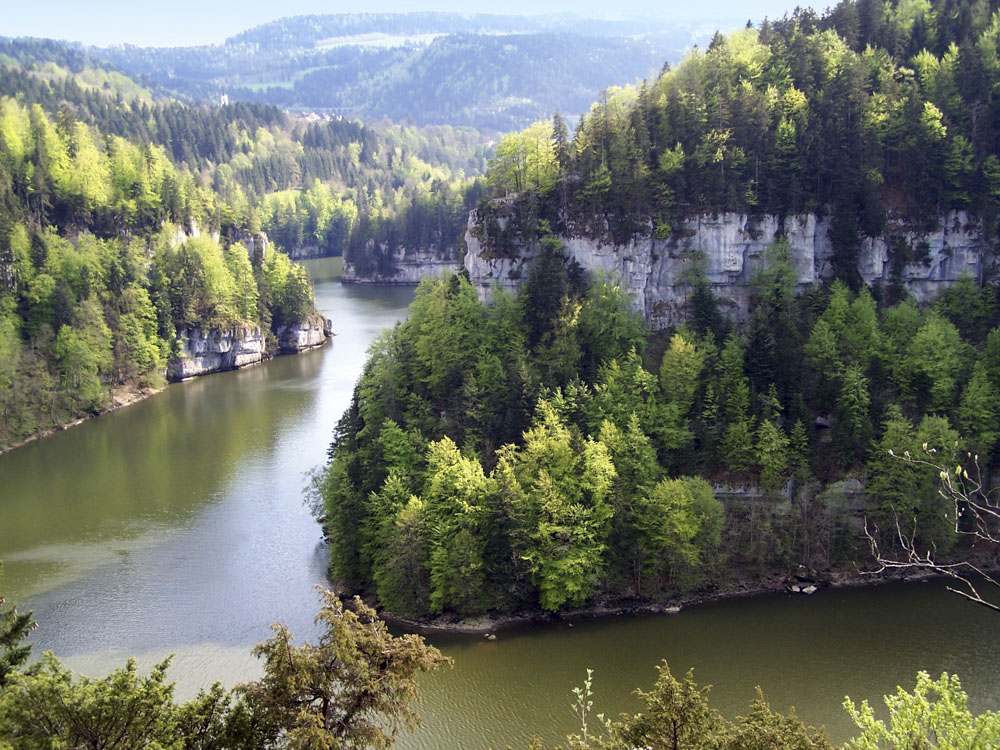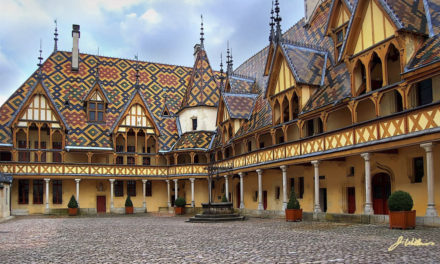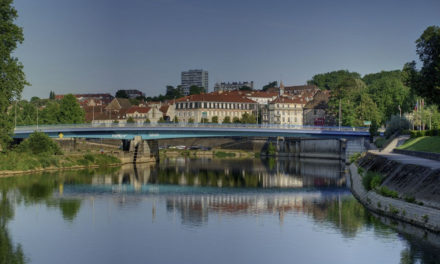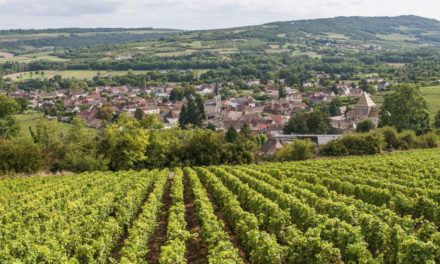
The Doubs department shares a frontier with Switzerland, a border of mountain folds, threaded with rivers, and intersected by quiet valleys, with ancient settlements beside springs, rivers or lakes, pastureland for cattle and fields of cereals and potatoes to get the inhabitants through the long winters. The region retains a strong local identity and pride in its traditional crafts – it is celebrated for watch-making and you can follow a watch trail along the Franco-Swiss border road linking Besancon and Neuchatel sampling cosy country inns along the way. Local delicacies abound, cheese in particular, with the great Mont d’Or (also called Vacherin) the most celebrated. From the summit of the Mont d’Or itself are tremendous views of the Alps.
Towns in the Doubs
Hotels in Doubs
The Gorges du Doubs
The river Doubs almost encircles the department and its powerful waters offer many splendid sights – especially in the dramatic upper reaches of the river. The Gorges du Doubs between Morteau and Montbeliard are narrow green gorges carved deep into the limestone, with waterfalls like the 27 metre high Saut de Doubs plunging into deep chasms. A boat service from Lac de Chaillexon takes in waterfalls and gorgeous views of the surrounding valleys. The Doubs river is a favourite with fishermen, especially popular for fly-fishing. (Prince Charles loves it here apparently.) At Ornans is the National Water and Fishing Centre, the only one of its kind in France, a museum entirely dedicated to past and present fishing techniques and materials.
Ornans
The pretty little town of Ornans in the Loue valley is built on both banks of the river, the bridge between the houses and their reflections in the water always a favourite photo opportunity. Ornans is famous as the birthplace of Gustave Courbet, the first French realist painter, who found many of his subjects around his birthplace, shocking the art establishment by his choice of painting ordinary people and humble activities. His paintings of Chateau d’Ornans, and Source de la Loue, express his love of the landscape. There is a museum in the house where he was born, an 18th century building with landscapes, sculptures and drawings by Courbet himself and his acolytes.
Besançon
The great capital of France-Comte, Besancon, lies in an almost perfect loop of the river Doubs, an excellent defensive site, much appreciated by the Romans and now overlooked by a Vauban citadel which gives the best view of the city and the meandering river below. The citadel also contains several fascinating museums dedicated to local traditions, natural history, and the role of the Resistance in the Second World War, including the Poteau des Fusilles which commemorate the Resistance fighters shot by the Germans. The old town has many streets of fine Renaissance houses, a 12th century cathedral, a good art museum including works by Courbet, naturellement, You can see it all by little train including the Citadel. The saltworks at Arc-et-Senans are another celebrated site, an extraordinary example of 18th century industrial architecture, designed by Louis XV’s architect, Claude-Nicolas Ledoux, and now a UNESCO world heritage site. Montbeliard is another town well worth a visit, for its splendid hilltop chateau, the colourful facades of the houses in the old town and its enormous covered market hall.
| Title | Address | Description |
|---|---|---|
DOUBS | Doubs, France |





